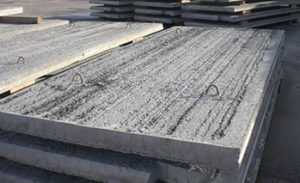 Precast concrete
Precast concrete
Precast Concrete is a construction product produced by casting concrete in a reusable mold or form which is then cured in a controlled environment, transported to the construction site and lifted into place.
Why Precast?
Using a precast concrete system offers many potential advantages over onsite casting:
- SAFE: Precast concrete production is performed on ground level, which helps with safety throughout a project. It is sufficiently strong to resist impacts, blasts and natural catastrophes like earthquakes, tornadoes and floods.
- HEALTHY: Precast concrete is stable throughout its life and does not need chemical treatment to protect it against rot and insect attack: this means that there are no emissions in the internal environment.
- OPTIMISED: There is greater control over material quality and workmanship in a precast plant compared to a construction site.
- DURABLE: Concrete is used where the structural stability has to be maintained for long periods. Effective design detailing helps to lengthen the life of a concrete building; precast manufacturers can offer guidance on designing for durability.
- ECOLOGICAL: Made of natural raw materials (stones, gravels, sand, cement), locally available almost everywhere and in an enormous quantity,precast concrete minimises the whole life cycle impact on the environment when compared with other construction materials. Precast concrete units can entirely be re-used or recycled (almost 100% of a concrete building can be recycled, no matter how heavily reinforced).
- AFFORDABLE: Precast concrete combines the excellent quality of factory production with a relatively inexpensive material. The costs to repair and maintain concrete structures are highly limited. There is thereforeno need to compromise on quality to reduce costs, simply choose the best way to use locally available resources. The forms used in a precast plant can be reused hundreds to thousands of times before they have to be replaced, often making it cheaper than onsite casting when looking at the cost per unit of formwork

